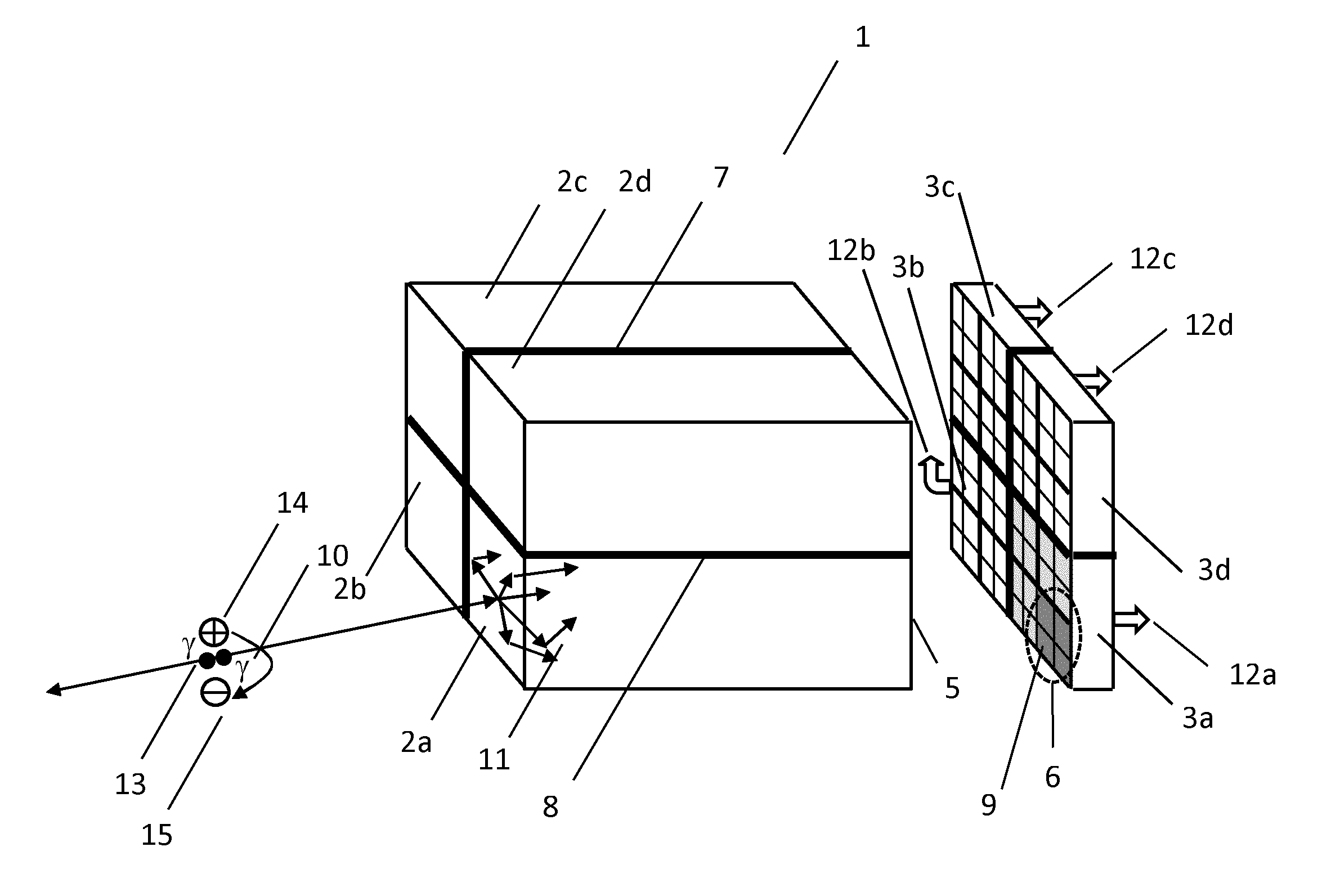Detection of radiation quanta using an optical detector pixel array and pixel cell trigger state sensing circuits
a technology of radiation quanta and detector pixel array, which is applied in the direction of optical radiation measurement, photometry using electric radiation detector, instruments, etc., can solve problems such as errors, and achieve the effects of reliable determination of gamma photon energy, high optical photon incidence rate, and fast recovery tim
- Summary
- Abstract
- Description
- Claims
- Application Information
AI Technical Summary
Benefits of technology
Problems solved by technology
Method used
Image
Examples
first embodiment
[0044]In the present invention a different approach is taken to the integration and the generation of a timing trigger signal. FIG. 4 illustrates aspects of the invention in which a pixel cell circuit 60, a radiation detection device 61 and a current waveform 62 are shown. With reference to FIG. 4, in the present invention a pixel cell trigger state sensing circuit 63 is configured to generate a digital signal (Isp) having either a first predetermined amplitude indicative of a triggered pixel cell or a second predetermined amplitude indicative of a non-triggered pixel cell. In the pixel cell trigger state sensing circuit 63 illustrated in FIG. 4 the digital signal is a digital current signal that is generated at first output 64. It will be appreciated however that alternative embodiments in which the digital signal is either a digital charge signal comprising a discrete packet of charge, or a digital voltage signal are also within the scope of the disclosure.
[0045]In the embodiment ...
second embodiment
[0053]FIG. 5 illustrates aspects of the invention in which a pixel cell circuit 70, a radiation detection device 81 and current waveforms 82 are shown. FIG. 5 illustrates a development of the circuit illustrated in FIG. 4 which addresses non-linearity issues often encountered in current switches such as switch 66 illustrated in FIG. 4. With reference to pixel cell circuit 70 in FIG. 5, each current source has two outputs, a first output 74 which generates a signal (Isp), and a second output 94 which generates a signal (Isn). First output 74 operates in the same way as output 64 in FIG. 4, thus when avalanche photodiode 65 is in a non-triggered state, switch 76 is in a non-conductive state such that current source 77 is disconnected from first output 74 and consequently the digital current signal generated at first output 74 has a second predetermined amplitude. When an optical photon is received by avalanche photodiode 65, avalanche photodiode 65 transitions into a triggered state i...
PUM
 Login to View More
Login to View More Abstract
Description
Claims
Application Information
 Login to View More
Login to View More - R&D
- Intellectual Property
- Life Sciences
- Materials
- Tech Scout
- Unparalleled Data Quality
- Higher Quality Content
- 60% Fewer Hallucinations
Browse by: Latest US Patents, China's latest patents, Technical Efficacy Thesaurus, Application Domain, Technology Topic, Popular Technical Reports.
© 2025 PatSnap. All rights reserved.Legal|Privacy policy|Modern Slavery Act Transparency Statement|Sitemap|About US| Contact US: help@patsnap.com



